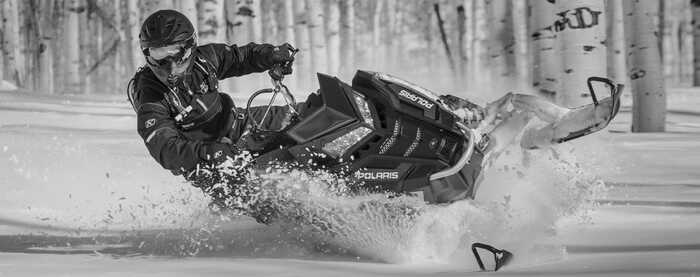
Polaris high-performance snowmobiles - Hydraulic Brake System Operation

The inner workings of the hydraulic brake system found in Polaris 2001 high-performance snowmobiles. This complex system comprises various crucial components, each playing a vital role:
- Brake Lever: The user-initiated interface that sets the braking process in motion.
- Master Cylinder: Converts mechanical force from the brake lever into hydraulic pressure.
- Hydraulic Hose: Transfers the hydraulic pressure from the master cylinder to the brake caliper.
- Brake Caliper (Slave Cylinder): Receives the hydraulic pressure and translates it into mechanical force to actuate the brakes.
- Brake Pads: Apply friction to the brake disc, facilitating deceleration.
- Brake Disc: Attached to the drive line, the brake disc provides the surface against which the brake pads operate.
Understanding the sequence of events during brake application elucidates the system's functionality:
- Initiation: The brake lever engages a piston within the master cylinder.
- Pressure Buildup: Closing a compensating port, the master cylinder increases hydraulic pressure within the system.
- Force Transmission: Hydraulic pressure causes the brake caliper piston to extend, exerting force on the movable brake pad.
- Friction Application: The brake pad contacts the brake disc, initiating friction and facilitating deceleration.
As brake lever pressure intensifies, so does the braking effect. However, wear and tear are inevitable, with friction gradually diminishing brake pad effectiveness. To counteract this, the caliper piston self-adjusts, compensating for pad wear by extending further outward.
Maintaining optimal brake fluid levels is imperative. Inadequate fluid levels may permit air infiltration, resulting in a spongy brake feel and compromised performance.
The compensating port within the master cylinder is a critical feature. It accommodates fluid expansion and contraction due to temperature fluctuations, ensuring consistent brake performance under varying conditions. During maintenance, verifying the port's openness is essential to prevent operational issues.
Furthermore, the system incorporates a diaphragm and vent mechanism to manage fluid pressure changes. This setup allows for pressure equalization, safeguarding against potential brake failure arising from fluid expansion or vent blockage.
WARNING: Exercise caution to avoid overfilling the reservoir, as it could impair brake function, leading to severe consequences.






